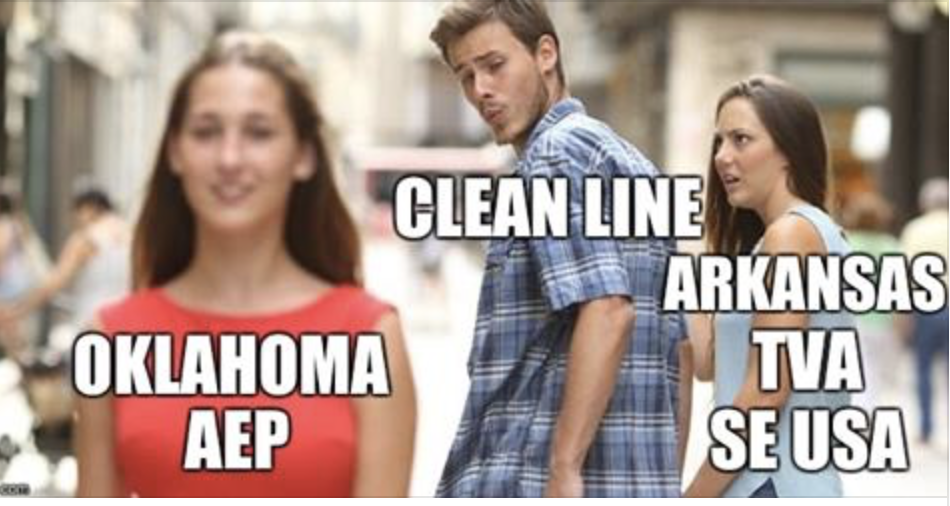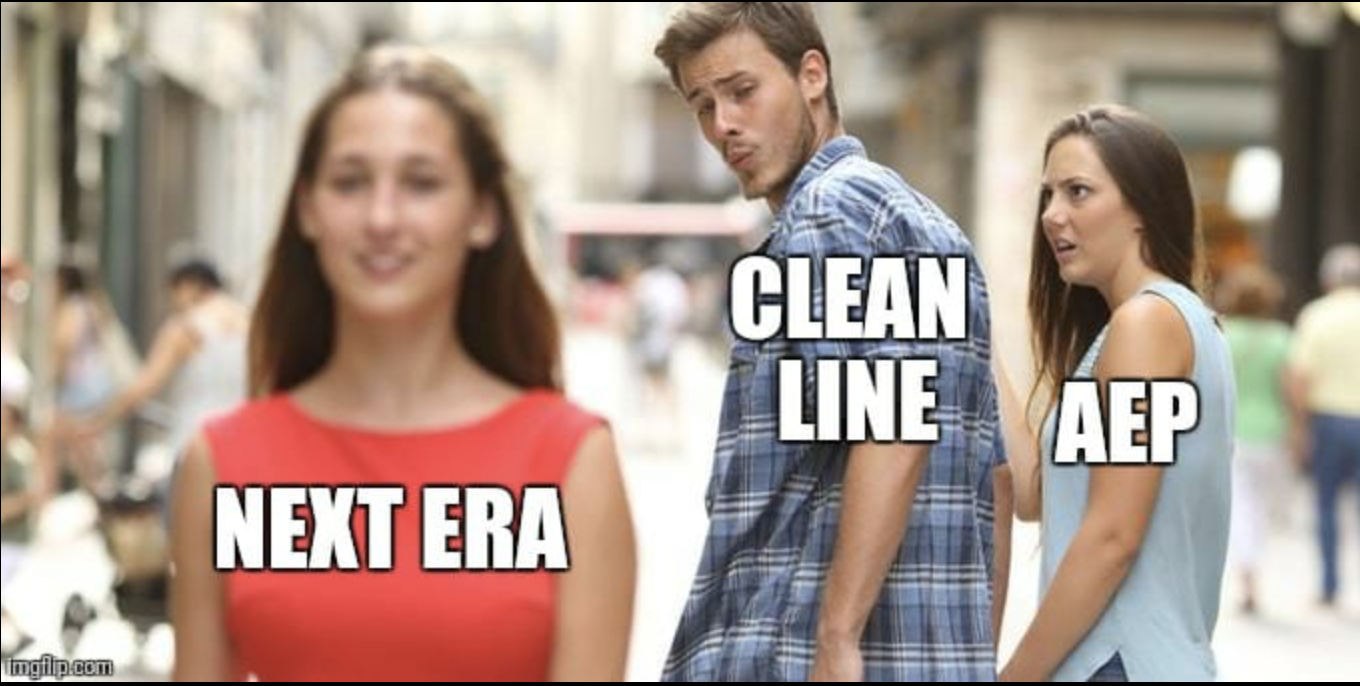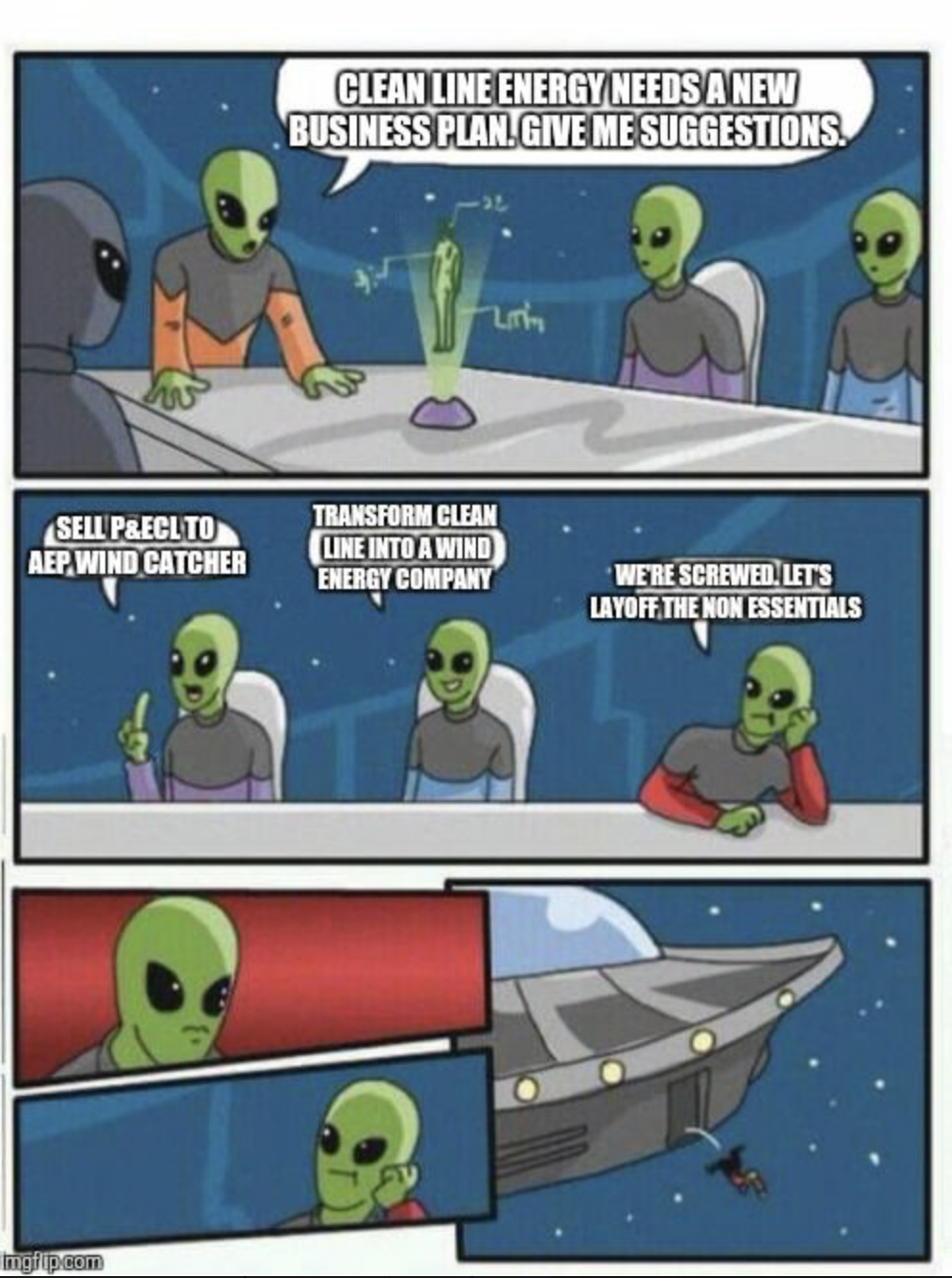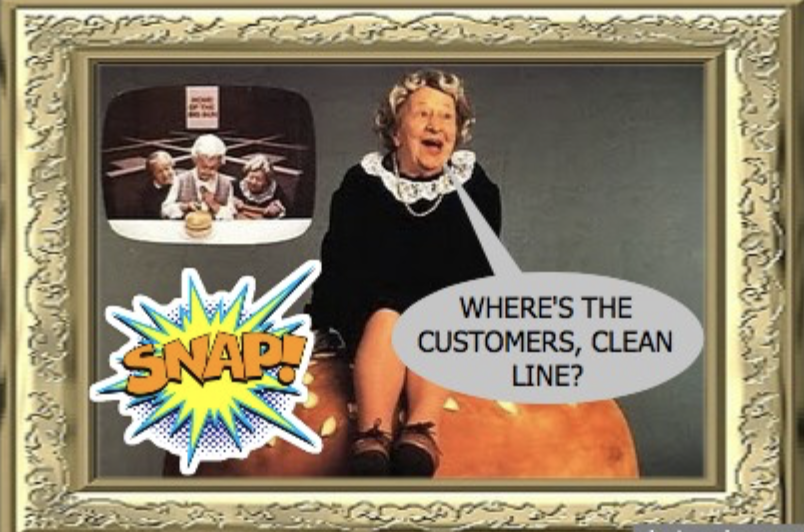Talk continues to swirl about Clean Line trying to rid itself of failed transmission ideas. In addition to its stilted courting of utility giant American Electric Power to buy the Plains & Eastern Clean Line, it now seems that perhaps everything is for sale to anybody who wants to do whatever with it. Other stalled transmission projects, such as Grain Belt Express, may also be on the auction block. Potential buyers for GBE could be companies that may already have a transmission footprint in Kansas, such as, perhaps, a company like ITC Great Plains? Maybe Clean Line believes that its bad ideas can be recycled into profitable enterprises? If so, why don't they do it themselves? Why might they be trying to sell these bad ideas to new companies?
Last time we checked, Clean Line's investors have dumped more than $200M into Michael Skelly's transmission ideas. I guess we can't blame the investors if they're trying to salvage some value out of their investment.
But you gotta wonder about who would buy these bad ideas and legacies of hatred? Clean Line got blamed for stirring up landowner obstinacy at a recent SPP workshop.
Landowner Opposition Formidable Obstacle to Tx Projects
Several speakers discussed the opposition Clean Line Energy Partners has faced from landowners and regulators in its plans to connect renewable resources with urban centers via long HVDC transmission lines.
“You’re going right back to the not-in-my-backyard thing,” said Ted Thomas, chair of the Arkansas Public Service Commission. “That’s causing intense pushback. ‘My granddaddy had this land. This is our family property. I don’t want this big, honking thing coming through here. You don’t understand, this property is not for sale.’”
“Siting is difficult,” agreed Missouri Public Service Commissioner Steve Stoll. “Anytime you’re dealing with private rights and eminent domain, it’s difficult. You can say you’re helping our area by giving us the ability to sell our homes and attract business, but [the landowners] don’t see much value in it.”
Once upon a time there was a happy, sparkling businessman who was in the right place at the right time. Our businessman made a bundle of money by a stroke of serendipity, and also gained a reputation as a business genius. His genius was so bright that many other businessmen thought he farted rainbows. So, they all ponied up their money and allowed our businessman to gamble it on one of his rainbow bright ideas. Except it wasn't really a good idea, and the businessman struggled and grasped but just couldn't make his idea work. The investors probably weren't too happy. Sparkling Genius could lose not only some money, but his sparkling genius reputation as well. So he farted some more rainbows and tried to sell his old, worn out ideas to a new crop of businessmen whose geniuses he presumed sparkled much, much less than his own. How might this story end?






 RSS Feed
RSS Feed